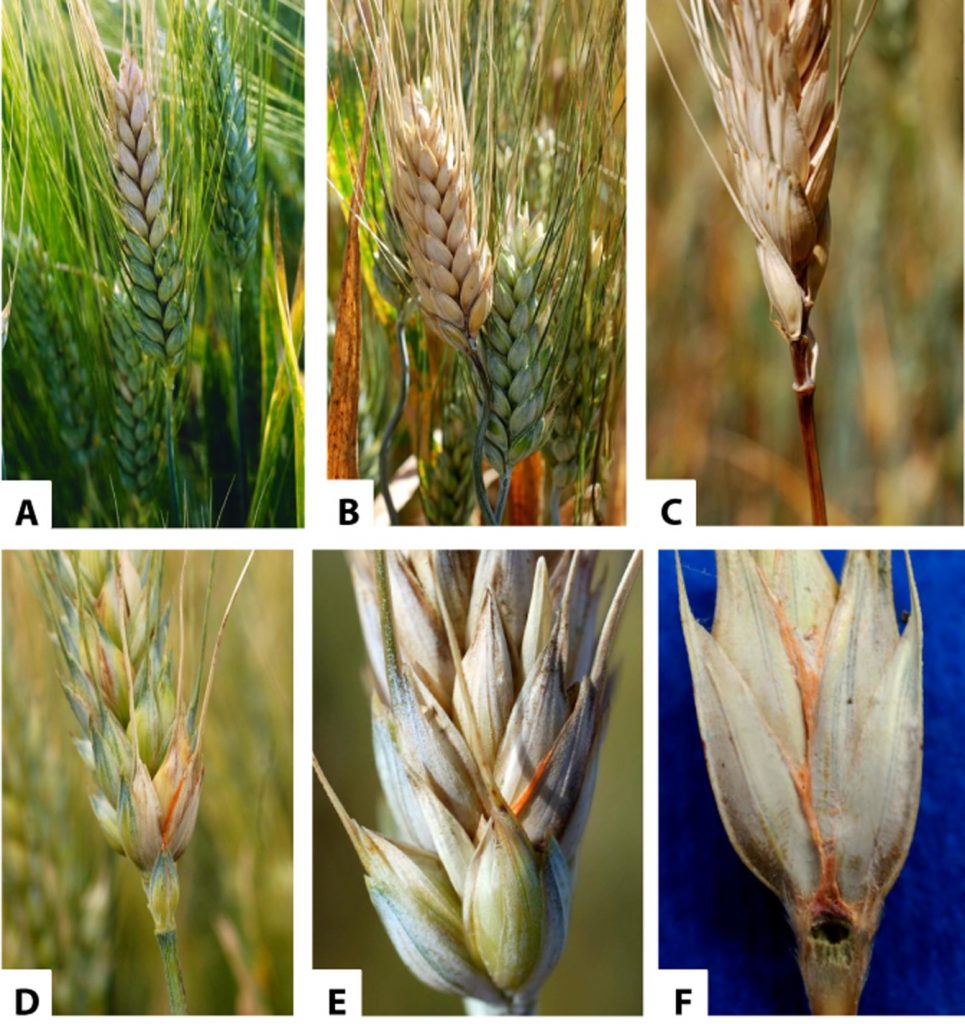
Introduction
Fusarium Head Blight (FHB), also known as wheat scab, is a devastating fungal disease caused primarily by Fusarium graminearum. This disease significantly impacts wheat production worldwide, leading to substantial yield losses and contamination of grain with mycotoxins, particularly deoxynivalenol (DON), which makes the grain unsafe for human and animal consumption. The severity of FHB outbreaks depends on various factors, including climatic conditions, wheat variety susceptibility, and agricultural practices.
This article explores the major wheat-producing regions most affected by FHB, highlighting the economic and agronomic consequences of the disease.
Regions Severely Affected by Fusarium Head Blight
1. North America: United States and Canada
FHB is a persistent threat in the wheat-producing regions of North America, particularly in the humid and temperate areas of the United States and Canada.
- United States: The disease is most prevalent in the Midwest and Great Plains, including states such as North Dakota, South Dakota, Minnesota, Ohio, Indiana, and Illinois. The combination of wet weather during the wheat flowering period and extensive maize cultivation (a host for Fusarium spores) increases the risk of severe outbreaks.
- Canada: The provinces of Manitoba, Saskatchewan, and Ontario frequently experience FHB outbreaks. In Manitoba, for example, high humidity and frequent rains create ideal conditions for the disease. The presence of Fusarium graminearum in Canadian wheat fields has led to strict mycotoxin regulations for grain exports.
2. Europe: Central and Eastern Regions
FHB poses a significant challenge to wheat production in Europe, particularly in Central and Eastern European countries where rainfall and humidity levels during the growing season are high.
- Germany and France: These countries are among the largest wheat producers in Europe, and FHB outbreaks occur regularly, especially in areas with high precipitation. In France, wheat fields that follow maize cropping are at higher risk.
- Poland and Ukraine: Poland, with its moderate continental climate, has experienced severe FHB outbreaks, leading to quality reductions in milling wheat. Ukraine, one of the world’s top wheat exporters, has also reported increasing FHB problems, affecting both domestic and international grain markets.
3. South America: Argentina and Brazil
- Argentina: The humid Pampas region, a major wheat-growing area, frequently experiences FHB outbreaks. Warm and wet conditions during the flowering stage contribute to high disease pressure.
- Brazil: In southern Brazil, where wheat is grown extensively, FHB poses a major risk due to high rainfall. Mycotoxin contamination in wheat harvested in Brazil has been a growing concern for food safety regulations.
4. Asia: China and India
- China: The Yangtze River basin and parts of northern China suffer from FHB due to high humidity levels. China’s wheat production is critical for global food security, and FHB outbreaks often lead to reduced grain quality.
- India: Although India has a drier climate, some regions, particularly in the northern states of Punjab and Haryana, have reported FHB cases, especially when unseasonal rains occur.
5. Australia
FHB is relatively less common in Australia compared to other regions due to its drier climate. However, certain areas in the eastern states, particularly New South Wales and Victoria, have experienced periodic outbreaks following wet weather patterns. The Australian wheat industry has invested heavily in breeding resistant varieties and implementing crop rotation strategies to mitigate risks.
Impact on Crop Yield and Economic Consequences
1. Direct Yield Losses
FHB reduces wheat yield by damaging the kernels, leading to “tombstone” grains that are shriveled and lightweight. Severe outbreaks can cause yield losses ranging from 10% to 50%, depending on environmental conditions and disease severity.
2. Grain Quality and Marketability
One of the most critical impacts of FHB is the contamination of grain with mycotoxins, particularly DON.
- Export Restrictions: Many countries have strict mycotoxin limits in wheat imports, leading to trade losses for exporting nations.
- Reduced Milling Quality: FHB-infected wheat has lower flour yield and baking quality, making it unsuitable for premium wheat products.
3. Increased Production Costs
Farmers must implement costly management strategies to control FHB, including:
- Fungicide applications, which can add significant expenses per hectare.
- Use of resistant wheat varieties, which often require additional breeding and seed costs.
- Post-harvest grain testing to ensure compliance with food safety standards.
4. Food Security Concerns
FHB outbreaks can disrupt wheat supply chains, particularly in major wheat-consuming nations. Contaminated wheat must be either downgraded for animal feed or discarded, reducing the total available food supply.
Management Strategies to Mitigate FHB
1. Crop Rotation and Residue Management
Rotating wheat with non-host crops (such as soybeans) and reducing maize stubble can lower Fusarium spore levels in the soil.
2. Use of Resistant Varieties
Breeding programs have developed wheat cultivars with increased FHB resistance, though complete resistance is not yet available.
3. Fungicide Applications
Timely application of triazole-based fungicides during wheat flowering can help reduce disease severity. However, fungicide resistance in Fusarium populations is an emerging concern.
4. Post-Harvest Handling
Proper drying and storage of wheat can prevent further mycotoxin development, ensuring better grain quality.
Conclusion
Fusarium Head Blight remains a major threat to wheat production globally, particularly in regions with humid and temperate climates. The economic consequences of FHB extend beyond direct yield losses, affecting global trade, food safety, and production costs. Effective disease management strategies, including crop rotation, resistant varieties, and targeted fungicide use, are essential to mitigate its impact. As climate patterns shift, the risk of FHB outbreaks may increase in new regions, making ongoing research and adaptation critical for sustainable wheat production.